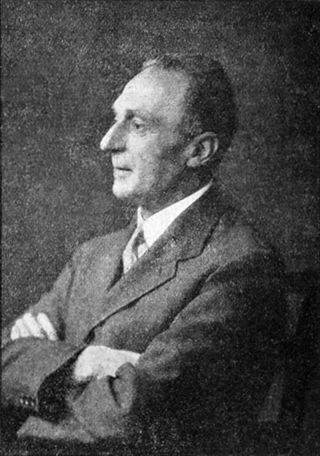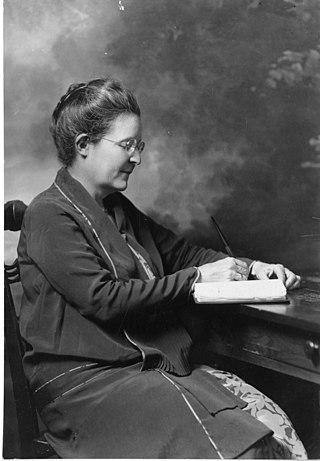
Graphology is the analysis of handwriting in an attempt to determine the writer's personality traits. Its methods and conclusions are not supported by scientific evidence, and as such it is considered to be a pseudoscience.
IGAS is the abbreviation for International Graphoanalysis Society. The organization is far more commonly referred to by its initials than the full name.

Handwriting is the personal and unique style of writing with a writing instrument, such as a pen or pencil in the hand. Handwriting includes both block and cursive styles and is separate from generic and formal handwriting script/style, calligraphy or typeface. Because each person's handwriting is unique and different, it can be used to verify a document's writer. The deterioration of a person's handwriting is also a symptom or result of several different diseases. The inability to produce clear and coherent handwriting is also known as dysgraphia.

Diane Hegarty, was an American religious leader who, along with longtime partner Anton LaVey, co-founded the Church of Satan.

Literomancy, from the Latin litero-, 'letter' + -mancy, 'divination', is a form of fortune-telling based on written words, or, in the case of Chinese, characters. A fortune-teller of this type is known as a literomancer. simplified Chinese: 测字; traditional Chinese: 測字; pinyin: cèzì)
Bessie Virginia Griffin, better known as Bessie Blount,, was an American writer, nurse, physical therapist, inventor and forensic scientist.
Psychogram is a term sometimes used in fields within psychology such as personality theory and perception as well as graphology and handwriting analysis, although the term has multiple senses, many of them outdated, and none of the senses of the term are defined clearly or used consistently.
Christian Dettweiler was an innovator in the field of graphology.

Robert Saudek was a Czech-born graphologist, diplomat, and writer of novels, stories, poems and plays. He had considerable influence on the content and standing of graphology worldwide. He also published numerous articles in many languages in periodicals as diverse as The Listener, Zeitschrift für Menschenkenntnis and the Journal of Social Psychology. He also founded the professional graphology society in the Netherlands. He also started two academic periodicals: one in Dutch and the other in English. Many graphologists worldwide today use Saudek’s work without knowing the origin.
Max Pulver is the author of four graphology books, several articles, and one novel (1927). He developed the theory of symbolism of space. His work discusses pressure, intelligence, and crime. He founded the Schweizerische Graphologische Gesellschaft in 1950 and was president until his death.

Barry L Beyerstein was a scientific skeptic and professor of psychology at Simon Fraser University in Burnaby, British Columbia. Beyerstein's research explored brain mechanisms of perception and consciousness, the effects of drugs on the brain and mind, sense of smell and its lesser-known contributions to human cognition and emotion. He was founder and chair of the BC Skeptics Society, a Fellow and member of the Executive Council of the Committee for the Scientific Investigation of Claims of the Paranormal (CSICOP), now known as the Committee for Skeptical Inquiry. Associate editor of the Scientific Review of Alternative Medicine Journal as well as a contributor to Skeptical Inquirer, Beyerstein was one of the original faculty of CSICOP's Skeptic's Toolbox. Beyerstein was a co-founder of the Canadians for Rational Health Policy and a member of the advisory board of the Drug Policy Foundation of Washington D.C. He was a founding board member of the Canadian Foundation for Drug Policy and contributed to the International Journal of Drug Policy. According to long-time friend James Alcock, Beyerstein once addressed the House of Commons Standing Committee on Health during discussions leading up to the passage of the Controlled Substances Act". Along with his brother Dale, Barry was active in the British Columbia Civil Liberties Association.

Marc Jeffrey Seifer is an American author who has published books on handwriting analysis (Graphology), human consciousness and the mind, biographies of the inventor Nikola Tesla, and several works of fiction. His book Wizard: The Life & Times of Nikola Tesla: Biography of a Genius has been called "Serious scholarship" by Scientific American, "Revelatory" by Publishers Weekly and is "Highly Recommended" by the American Association for the Advancement of Science.

Jules Crépieux-Jamin (1859–1940) was a French graphologist born in Arras.

Jean-Hippolyte Michon was a French priest, an archaeologist, and the founder of graphology.
Wilhelm Langenbruch was a German graphologist born in Aplerbeck.

Beverley East is a leading expert in the field of handwriting analysis, a court-qualified forensic document examiner and author. She works in her home city of Washington, DC, and in Jamaica.
Eric Singer, LL.D. (Vienna) (1896-1969) was an Austrian poet and writer, as well as one of the foremost UK graphologists of the 20th century. He originally studied handwriting analysis and psychology in Austria and Switzerland under Ludwig Klages and went on to specialise in English handwriting. His research focussed on ego symbols and in particular the personal pronoun "I". He also taught graphology and his most notable student was Francis Hilliger who went on to found the British Institute of Graphologists (B.I.G.) After his death his wife and the B.I.G. felt his contribution to be so important that they republished a number of his works.

June Etta Downey was an American psychologist who studied personality and handwriting. Downey was born and raised in Laramie, Wyoming, where she received her degree in Greek and Latin from the University of Wyoming. Throughout her life Downey wrote seven books and over seventy articles. Included in this work, Downey developed the Individual Will-Temperament Test, which was one of the first tests to evaluate character traits separately from intellectual capacity and the first to use psychographic methods for interpretation.

Igal Vardi is an Israeli graphologist, psychologist, artist, writer and entrepreneur. His painting style is topological painting.

Rafael Schermann (1879–1945) also known as Raphael Schermann was a Polish graphologist, self-proclaimed psychic and writer.













